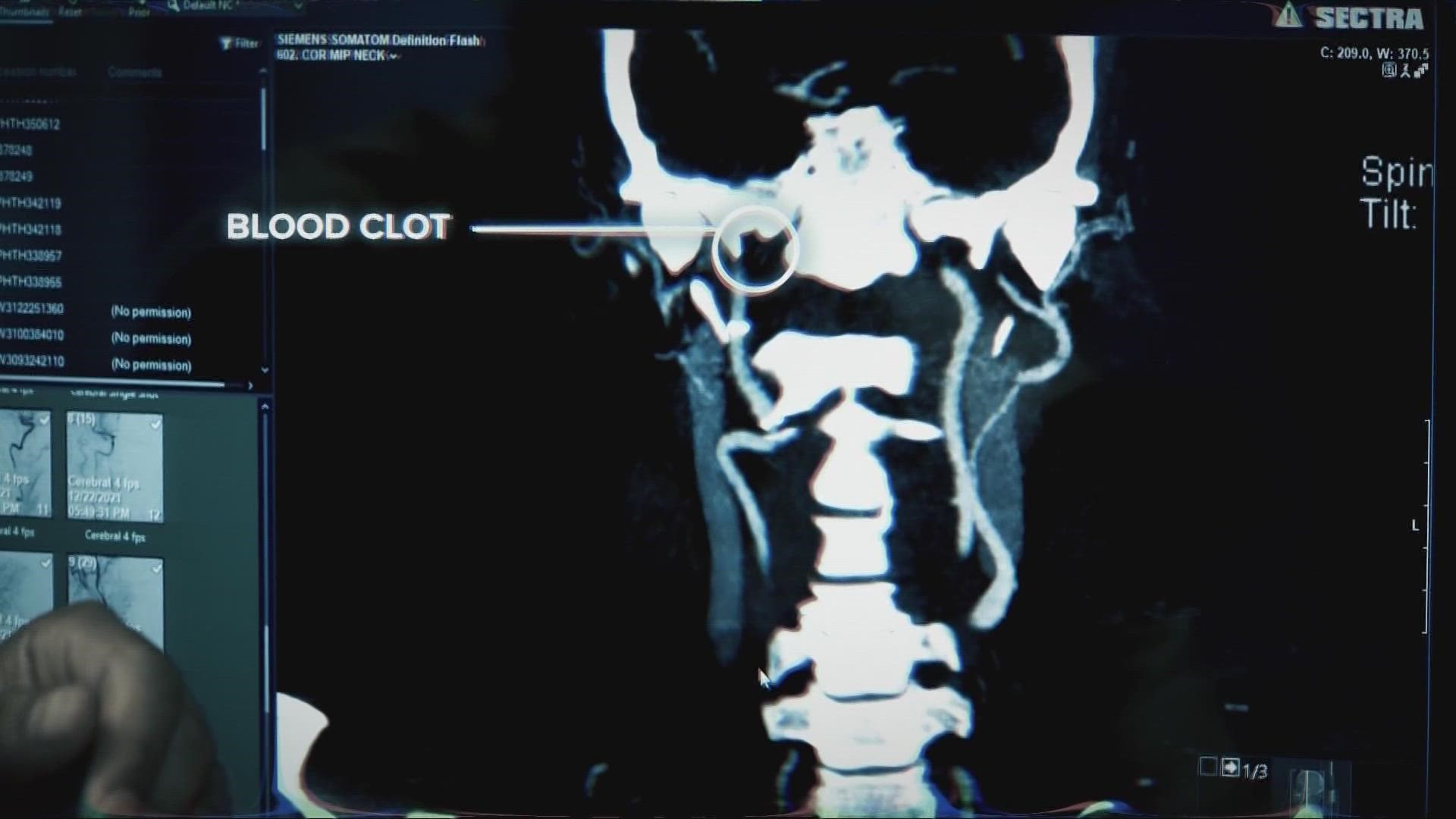CLEVELAND — Call it pure luck, fate, or destiny—there's something to be said for being in the right place at the right time, especially when it involves life or death.
"Timing is everything" is a phrase not lost on 52-year-old Eric Hess, the chief operating officer for University Hospitals' Harrington Heart and Vascular Center. Hess is not a doctor, but he knows what it's like to be saved by one. It happened in December.
"It felt like a severe strain in my neck; it was strange that it was both sides," he remembered. "It was unusual and something I never experienced before, so I couldn't really figure out what it was."
Hess has Factor V Leiden, a mutation of one of the clotting factors in the blood. This mutation can increase the chance of developing abnormal blood clots, most commonly in the legs or lungs.
He had experienced some clots in the past and was already taking blood thinners, so he didn't think that was the issue. But two weeks later, the neck pain persisted.
"Some days it was in the back of my head, some days it was in the front of my head," he said. "It was unexplainable, but when I woke up that morning, I will tell you I was in tears. My head hurt so bad, I literally held my head and just cried."
He went to work anyway, despite a new symptom that started.
"When I drove to work, I couldn't see out of my right eye," he told us. "It was like looking through an icy windshield."
When he got to the office, one of the physicians called to talk some business. He asked Hess how he was doing, and Hess casually described what he'd been experiencing. The doctor told him to get to the emergency department right away.
The ED was a short walk from his office, a walk that would save his life. When Hess described his symptoms, he was rushed to the MRI suite. That's when everything changed.
"They literally have me having the stroke while I'm in the MRI, so they're imaging my brain while I'm having the stroke," Hess explained. "I'm not sure that happens very often."
Hess was rushed into the endovascular suite, where the stroke team discovered he had a trifecta of problems. By now, his left side was paralyzed, and a 2 1/2-centimeter clot blocked blood to his brain.
UH neurosurgeon Dr. Abhishek "Abhi" Ray realized quickly he was dealing with a difficult case.
"He had an occlusion of the main blood vessel that supplies blood to the right side of his brain," Ray said of Hess. "On top of that, he had a carotid dissection in his cervical carotid artery in his neck that was high up, and the vessel itself was narrow and very windy."
A carotid dissection is a tear of the inner layer of the wall of an artery. That's what caused Hess' pain, but his unusual anatomy would make it very difficult to get a catheter through to fix the tear and remove the clot.
It was a delicate and tricky rescue mission. Ray managed to remove the clot first, and Hess improved in seconds.
"It's something when they're paralyzed and then they're able to lift their arm and leg off the bed," Ray said. "There's not a lot of things we can do in medicine where that kind of result happens in front of your eyes, and that is extremely rewarding."
Days later, Hess emerged with no cognitive or debilitating physical issues.
"I was never a runner, and I ran my first five 5K two weekends ago," he declared, proudly.
But he's also very aware of what might have happened if he didn't take his colleague's advice.
"I could have had a stroke here in my office by myself," he thought. "Or if I'd been home, I'd be dead."
"Time is brain, and this is a remarkable case in that it happened here and we were able to do things very quickly," Ray added.
Ray hopes people will understand Hess' survival is a story about time. The minutes he saved may have added years to his life.
Remember the acronym BE FAST:
- Is the person having trouble with Balance or coordination?
- Are they experiencing blurred, double, or loss of vision in one or both Eyes?
- Is one side of the Face drooping or numb? Ask them to smile.
- Is one Arm weak or numb? If they try to raise their arms, does one drift downward?
- Is Speech slurred or are they unable to speak?
- If any of these symptoms are happening, it's Time to call 911.
Because of Hess' windy carotid, he's still at risk, so he'll have to be a little more careful than the general population. He thinks the dissection happened while he was lifting weights, and Ray doesn't rule out that theory.

